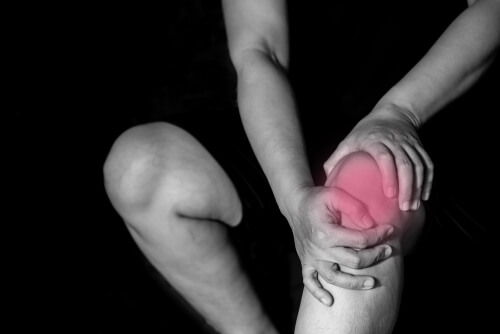Locked knee
The knee can become locked by making a wrong movement or due to trauma. When this happens, stretching and bending of the knee joint is impossible or limited. Curious about more information, such as how to treat this? Then feel free to read on. We are happy to explain.
The cause of a locked knee
A knee can become locked due to making a wrong movement or due to trauma. In some cases, no cause can be found. Usually, the meniscus is damaged when the knee is locked. There are several causes that can cause the knee to become locked. These are briefly discussed below.
Torn meniscus or loosening of joint
Incorrect movement can cause the meniscus to tear or become detached from the joint. The meniscus comes off its place and, as a result, the meniscus gets (partially) stuck in the joint between the upper and lower leg. As a result, the upper leg and lower leg can no longer move smoothly. It then feels as if the movement of the knee joint is very restricted.
Ruptured cruciate ligament
Incorrect movement can also rupture the cruciate ligaments. The ends of the cruciate ligaments can then become stuck in the knee joint. This limits the joint's ability to move. A tear in the cruciate ligament can therefore also be a cause of a locked knee.
Joint mouse
A joint mouse can also be another possible cause of a knee locking up. However, this is rare. In a joint mouse, a piece of cartilage or bone has come loose and is floating around in the knee. When this piece of cartilage or bone gets trapped between the upper and lower leg, the knee joint can become locked.

The symptoms when your knee is locked
If your knee is locked, you can no longer fully bend, extend or move your knee in either direction. It is then very difficult to make this movement. As a result, you can no longer walk properly. Sometimes the knee can also get swollen, because there is damage in the knee joint. Below is a brief summary of all the symptoms:
- Difficulty walking
- The knee may swell
- You can no longer fully flex or extend the knee
- You can no longer move fully in both directions
Treatment
When treating a locked knee, it is important to first identify the cause. Severe damage in the knee joint may require surgery. However, this doesn't have to be the case. With a twisted or stretched knee, we recommend starting physiotherapy. A treatment plan is then drawn up to make the knee and the surrounding muscles stronger. This will give you more muscle strength in the leg and more stability in the knee joint.
If there is no serious damage, you can usually resume normal activities after six to 12 weeks. If surgery is still required, the physiotherapist can also help rehabilitate.








